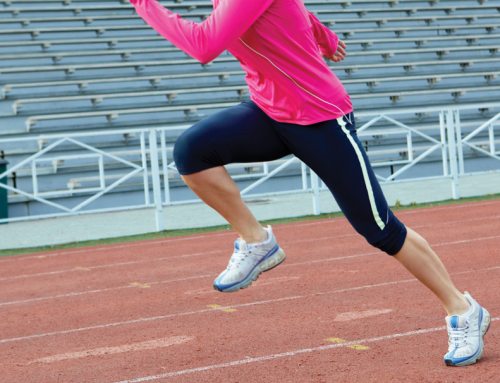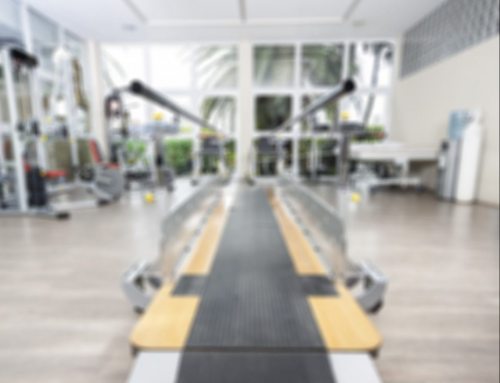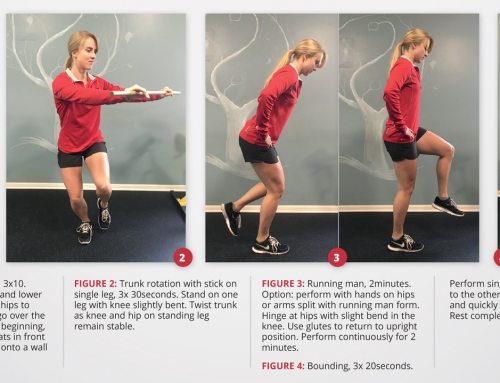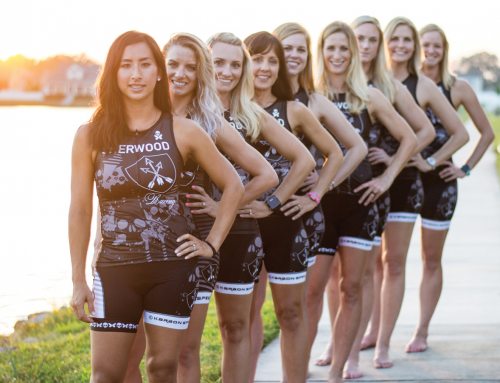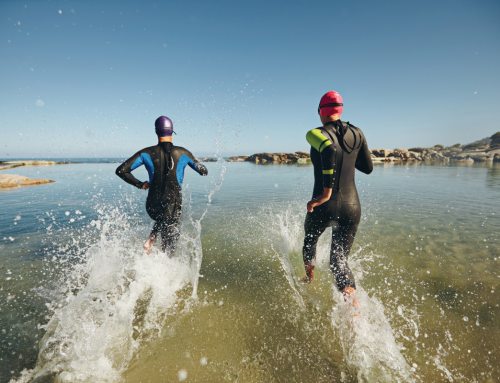By Michael Sharp, MS, LAT, ATC
To be able to compete in the sport of triathlon, a person must commit themselves (and often times their family) to the necessary rigors of training for three events. With such a vigorous training regimen, we typically see a few common injuries among triathletes. While certain injuries are common, injuries themselves are not inevitable. With the proper preventative stretches and exercises, triathletes can compete without the fear of injury limiting their performance.
Swimming
The constant overhead motion of the swim stroke can put a lot of stress on the shoulders and puts swimmers at risk of rotator cuff tendonitis, which happens when the swimmer repeatedly reaches up overhead through the stroke and pinches the rotator cuff due to the shoulder boney anatomy. This tendonitis also occurs when the swimmer uses his or her shoulders to overcompensate for weak core muscles. As the swimmer rotates the torso with each stroke, if the core muscles are weak and the technique breaks down, additional strain is put on the shoulders to compensate, resulting in an overuse injury of the shoulders. To prevent this impingement, proper strengthening of the rotator cuff and posterior shoulder muscles is needed. This strengthening helps keep the shoulder in proper alignment and limits the potential impingement with each stroke.
Cycling
Cyclists can often suffer from anterior knee pain or patella tendonitis. The constant flexion and extension of the knee with the pedal stroke causes the tendon in the front of the knee to become inflamed. To avoid this, first and foremost, a proper bike fitting should be done to insure that the tendonitis is not the result of poor form. Next, quadriceps strengthening exercises that focus on the patella and it functioning properly should be initiated.
Running
Runners tend to have Iliotibial (IT) Band Tendonitis. The constant flexion and extension of the knee with each step causes the IT band at the lateral knee to become irritated. Wearing shoes that are inappropriate based on the foot mechanics of the runner may exacerbate IT band tendonitis. When buying running shoes, be sure to go to a specialty store where the shoe fitters are experienced in analyzing gait mechanics and can put each person in the proper shoe. More enthusiastic runners may even want to get a video motion analysis of themselves while running. Video motion analyses allows the clinician to video the gait pattern of the runner and slow the video in order to analyze the running mechanics that might lead to injury or diminished performance. Rope assisted stretching of the lateral thigh muscles and self-massage with a foam roller should also be performed to treat IT band tendonitis.
Injuries don’t need to limit training or competing in the fast growing sport of triathlon. With a little diligence toward prevention, people of all skill levels can swim, bike and run like an elite athlete.
# # #
Michael Sharp is a Certified Athletic Trainer at The Athletic Performance Center where he focuses on sports rehabilitation for active individuals and endurance athletes. In his free time he enjoys training and competing in triathlons, trail races and half marathons. Mike can be reached at msharp@raleighortho.com.


